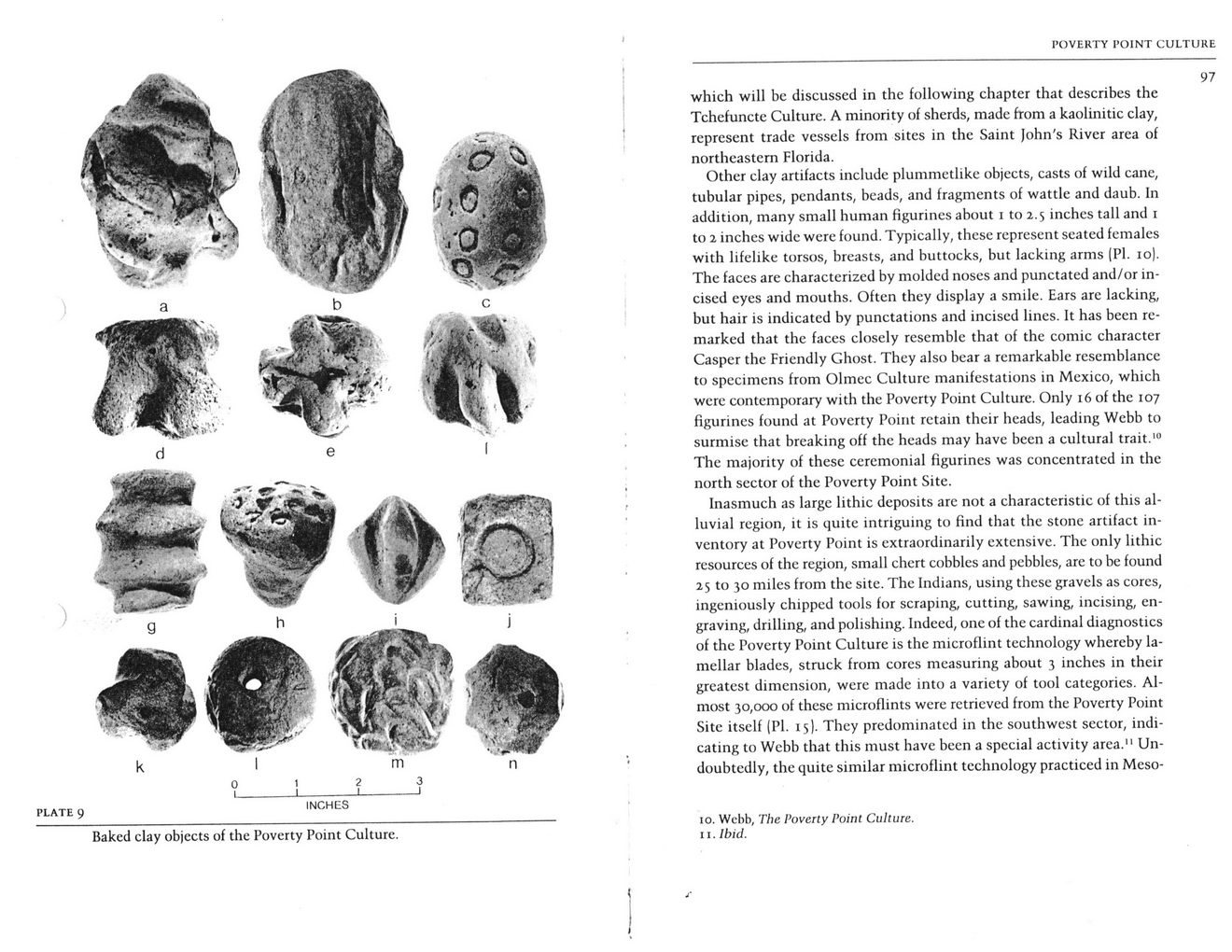This text was obtained via automated optical character recognition.
It has not been edited and may therefore contain several errors.
Baked clay objects of the Poverty Point Culture. POVERTY POINT CULTURE which will be discussed in the following chapter that describes the Tchefuncte Culture. A minority of sherds, made from a kaolinitic clay, represent trade vessels from sites in the Saint John's River area of northeastern Florida. Other clay artifacts include plummetlike objects, casts of wild cane, tubular pipes, pendants, beads, and fragments of wattle and daub. In addition, many small human figurines about i to 2.5 inches tall and 1 to 2 inches wide were found. Typically, these represent seated females with lifelike torsos, breasts, and buttocks, but lacking arms (Pi. 10). The faces are characterized by molded noses and punctated and/or incised eyes and mouths. Often they display a smile. Ears are lacking, but hair is indicated by punctations and incised lines. It has been remarked that the faces closely resemble that of the comic character Casper the Friendly Ghost. They also bear a remarkable resemblance to specimens from Olmec Culture manifestations in Mexico, which were contemporary with the Poverty Point Culture. Only 16 of the 107 figurines found at Poverty Point retain their heads, leading Webb to surmise that breaking off the heads may have been a cultural trait.10 The majority of these ceremonial figurines was concentrated in the north sector of the Poverty Point Site. Inasmuch as large lithic deposits are not a characteristic of this alluvial region, it is quite intriguing to find that the stone artifact inventory at Poverty Point is extraordinarily extensive. The only lithic resources of the region, small chert cobbles and pebbles, are to be found 25 to 30 miles from the site. The Indians, using these gravels as cores, ingeniously chipped tools for scraping, cutting, sawing, incising, engraving, drilling, and polishing. Indeed, one of the cardinal diagnostics of the Poverty Point Culture is the microflint technology whereby lamellar blades, struck from cores measuring about 3 inches in their greatest dimension, were made into a variety of tool categories. Almost 30,000 of these microflints were retrieved from the Poverty Point Site itself (Pi. 15). They predominated in the southwest sector, indicating to Webb that this must have been a special activity area." Undoubtedly, the quite similar microflint technology practiced in Meso- 10. Webb, The Poverty Point Culture. 11. Ibid.

Poverty Point (Indian Culture) Poverty Point Culture - Louisiana Archeology Introduction (04)